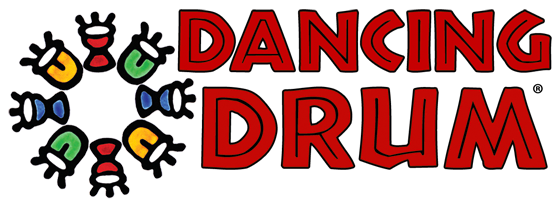- Continue Shopping
- Your Cart is Empty
Successful West African Drumming in the General Music Classroom
West African drumming is a fantastic experience I recommend for all music educators to expand their musical repertoire. When I traveled to West Africa, I was amazed and inspired by the depth of rhythmic and melodic expression that exists in this art form. I say melodic because the rhythms are taught in the form of a song of various pitches that the drum can make. All of the master drummers I studied with would sing the rhythms to me with their own language or “drum talk.” I found it was much easier to learn and retain these rhythms by singing them while I was playing them.
Upon my return to the US, Dancing Drum co-creator Lindsay Rust and I developed a version of this technique called Rhythm Phonics, which uses drum sounds, words, and syllables to teach rhythmic patterns. The Drum Sounds are distilled into two essential tones: a low sound called “Boom” and a high sound called “Ba”. These correspond to the Bass and Tone sound of the djembe. There is a third, higher slap sound played on the djembe, but that sound is too difficult for most K-8 students to make, so we do not use it in our general music programs.
The Words & Syllables of Rhythm Phonics are a verbal piece or song written so that the syllables of the phrase match the notes in the rhythm pattern. As this is a tool for learning, memory, and retention this phrase doesn’t necessarily have to originate from the West African source; we create a phrase that students can remember easily. We have used this two-part Rhythm Phonics method over the last decade in all of our Dancing Drum programs with incredible success.
When you hear West African drumming, there are so many rhythmic layers and syncopations happening that it is often difficult to know how to teach it successfully. Many music teachers have expressed to me how amazing it was to play a West African drumming piece at a conference session with all of their colleagues, but find it very difficult to replicate that experience in the general music classroom. Inside the polyrhythmic layers of a West African drumming arrangement is a pattern that contains its essence or theme and is usually the first rhythm taught to establish the foundation of the piece. In Dancing Drum, we call this the Signature Rhythm and I recommend starting your lesson with this pattern.
To begin, introduce the Signature Rhythm verbally using Rhythm Phonics. After your students can sing this rhythm, have them play it in unison to develop their sense of groove, steadiness of tempo and understand the “feel” of rhythm. This unison playing is what we call a “Level 1” arrangement. Students should be able to play Level 1 before moving on to Level 2. For younger grade levels and student groups, a Level 1 arrangement can be the best fit for their abilities and works great as a classroom activity or performance piece. I encourage music teachers to not underestimate the benefits of focusing on a unison rhythm to teach students how to play in an ensemble and enhance their group listening skills. Once you have established a solid foundation by playing the unison Signature Rhythm, adding a 2nd and 3rd rhythm will be much easier and successful for your students.
In Level 2, we add a second part or “accompaniment" to make a two-part polyrhythm. We introduce the accompaniment verbally first, using Rhythm Phonics, then move to the drums to practice the part in unison. When the entire group has a good grasp on the feeling of the accompaniment, then we’re ready to try the Level 2 arrangement. When your students are ready for Level 3, repeat the same process and add the 3rd rhythm of the arrangement.
Our “Drumming Up World Music: West Africa” curriculum book utilizes all of these methods with drum and xylophone arrangements from 5 West African countries to get your students successfully playing and enjoying the richness of this music in the general music classroom. For more info about this book and Dancing Drum, please visit, http://dancingdrum.com/pages/drumming-up-world-music
Happy drumming!
Steve Campbell, Musical Director
Dancing Drum





